Remember when every toy promised to unlock the secrets of the universe, turn you into the next Thomas Edison, or at least make you the coolest kid on the block? Those were the days when marketing departments convinced our parents that a plastic contraption could transform us into budding scientists, and somehow, we believed it too. Whether they actually worked as advertised was beside the point – these toys made us feel like we were on the verge of changing the world, one wobbly experiment at a time.
1. Chemistry Sets
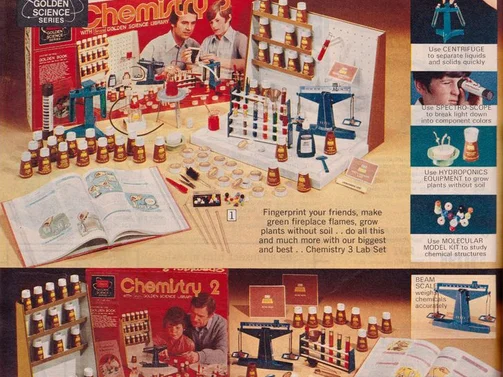
The Gilbert Chemistry Set arrived under the Christmas tree like a portal to another dimension, complete with test tubes, beakers, and mysterious powders that promised explosive results. You’d spend hours mixing harmless compounds, desperately hoping for the dramatic reactions shown on the box, only to create slightly fizzy water or mildly discolored solutions. The instruction manual read like ancient alchemy, filled with warnings about proper ventilation and adult supervision that we promptly ignored.
Most of the “experiments” yielded results about as exciting as watching paint dry, but that didn’t stop us from feeling like mad scientists in our basement laboratories. We’d carefully measure out the prescribed amounts of sodium bicarbonate and vinegar, convinced we were moments away from a breakthrough that would revolutionize science. The fact that nothing particularly spectacular happened only fueled our determination to keep trying, certain that the next combination would produce the volcanic eruption we’d been promised.
2. Erector Sets
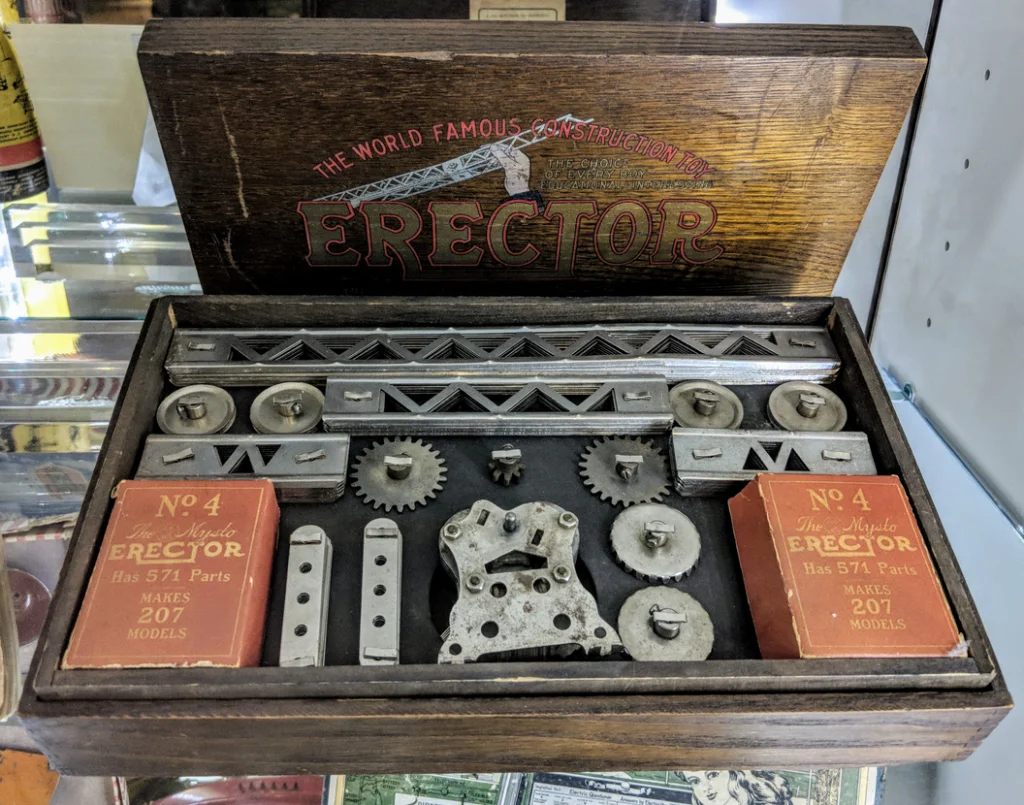
The Erector Set box showed gleaming skyscrapers and complex bridges that looked like they belonged in a world’s fair, but somehow our creations always resembled wobbly towers that threatened to collapse at the slightest vibration. Hours were spent wrestling with tiny screws and metal beams, trying to decipher instruction manuals that seemed to assume you already had an engineering degree. The satisfaction of completing even the simplest project felt like conquering Mount Everest, especially when half the pieces inevitably went missing under the couch.
Every Erector Set came with grand promises of motorized vehicles and working cranes, but the reality was usually a lopsided contraption that barely held together long enough for a photograph. The motors were temperamental creatures that either didn’t work at all or spun wildly out of control, sending carefully constructed projects flying across the room. Still, there was something magical about those metal pieces and the possibility they represented – even if our finished products looked nothing like the architectural marvels on the packaging.
3. Sea-Monkeys
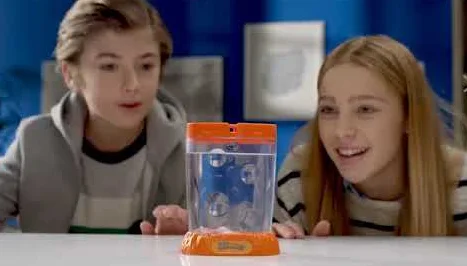
The comic book ads promised an underwater kingdom populated by tiny humanoids who would live in your bedroom and provide endless entertainment, but what actually hatched looked more like animated specks of dust than the crowned royalty depicted in the marketing materials. You’d stare at the cloudy water for hours, convinced you could see little faces and maybe even tiny castles, though it was probably just your imagination working overtime. The instruction booklet spoke of training them to perform tricks and respond to light, turning every breakfast table into a miniature marine biology laboratory.
Most Sea-Monkey colonies lasted about as long as a goldfish at a county fair, but during their brief existence, they represented pure magic and scientific achievement rolled into one disappointing package. You’d religiously follow the feeding schedule and aeration instructions, certain that proper care would reveal their hidden civilization and maybe even their supposed telepathic abilities. The reality was usually a few brine shrimp swimming in circles, but in our minds, we were successful marine biologists managing our own aquatic research facility.
4. Build-Your-Own Radio Kits
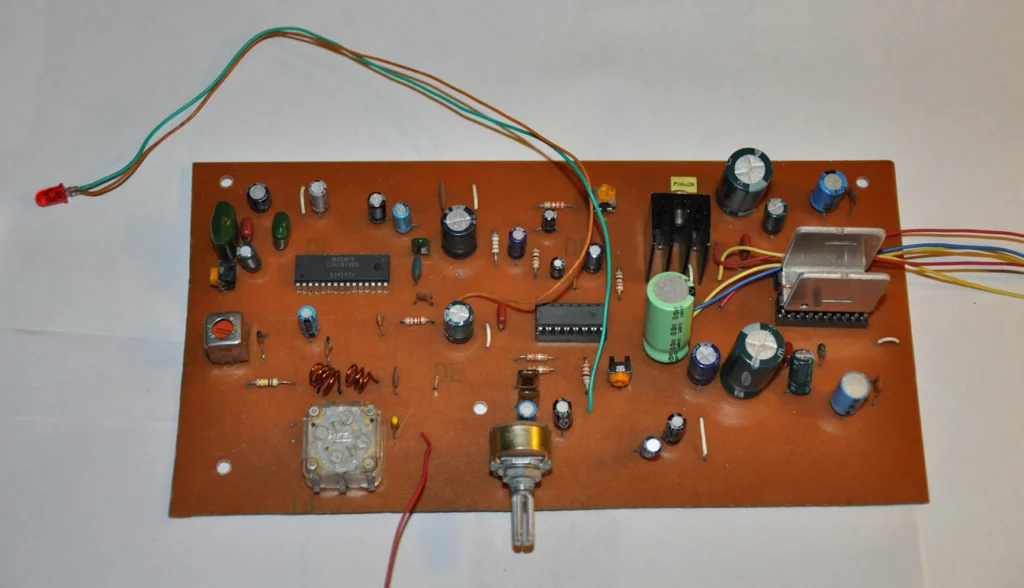
The prospect of pulling voices and music out of thin air felt like the closest thing to real magic that science could offer, and those radio kits promised to reveal the secrets of wireless communication to anyone brave enough to tackle the soldering iron. The instruction manuals were filled with mysterious diagrams showing resistors, capacitors, and transistors that might as well have been hieroglyphics to most of us. Hours were spent carefully connecting tiny components, convinced that one wrong move would result in either radio silence or accidentally contacting aliens.
When your homemade radio finally crackled to life with distant AM stations fading in and out like ghostly transmissions, it felt like you’d just invented the technology yourself rather than assembled a kit. The sound quality was usually terrible, plagued by static and interference that made every broadcast sound like it was coming from the other side of the galaxy. But there was something profound about knowing you’d built the device that was capturing these invisible signals, even if you couldn’t quite explain how the whole process actually worked.
5. Microscope Sets
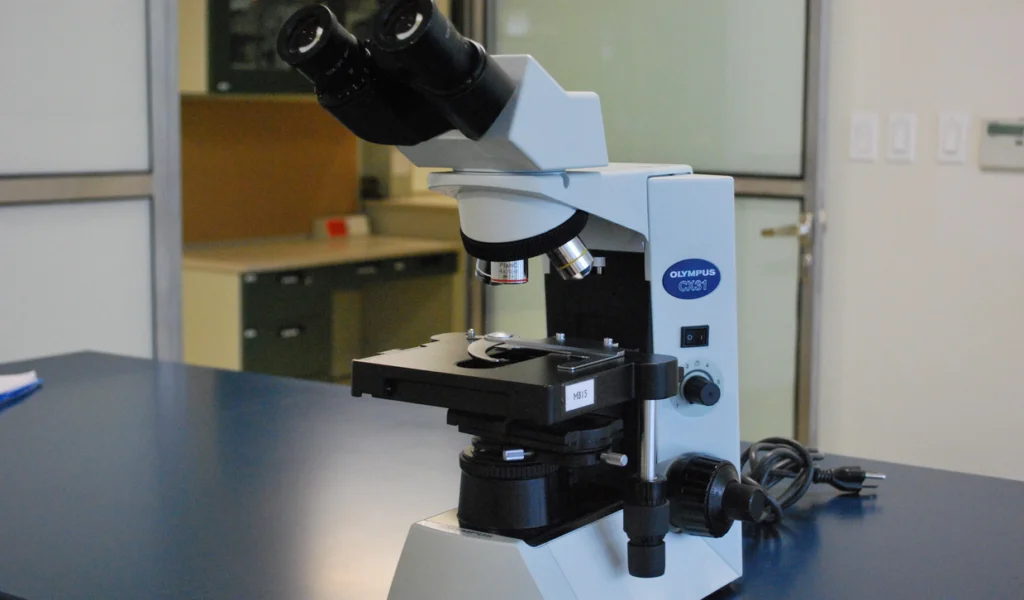
Those department store microscopes promised to reveal hidden worlds teeming with microscopic life, but most of them had the optical quality of a funhouse mirror and magnification that barely improved on a good magnifying glass. The prepared slides that came with the kit showed tantalizing glimpses of onion cells and butterfly wings, but trying to prepare your own specimens usually resulted in viewing nothing more exciting than air bubbles and lint. The instruction booklet was filled with scientific terminology that made you feel like a real researcher, even when your biggest discovery was that pond water looked pretty much like pond water, just slightly bigger.
Despite their limitations, these microscopes opened up entire afternoons of backyard exploration and specimen collection that would have made Charles Darwin proud. You’d spend hours examining everything from flower petals to your own hair, convinced that each sample might reveal some groundbreaking secret about the natural world. The fact that most observations yielded nothing more remarkable than blurry, unidentifiable shapes didn’t dampen the enthusiasm for scientific discovery that came with having your very own laboratory equipment.
6. Electronic Project Kits
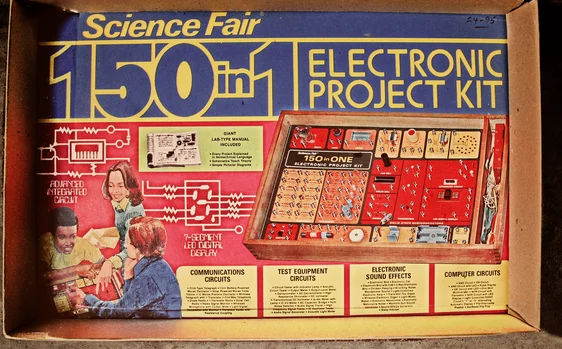
The 150-in-1 Electronic Project Kit arrived like a suitcase full of technological possibilities, complete with springs, wires, and components that could allegedly be combined to create everything from door alarms to lie detectors. The massive instruction manual was a tome of scientific possibility, showing circuit diagrams that looked complex enough to power a space mission. Each project promised to teach fundamental principles of electronics while creating useful gadgets that would amaze friends and family.
Reality often involved spending more time troubleshooting loose connections than actually learning about electronics, as the spring-loaded contacts seemed designed to fail at the most crucial moments. When a project actually worked as intended, it felt like you’d just unlocked the secrets of modern technology, even if the “radio” only picked up static or the “burglar alarm” went off every time someone walked by. The real education came from the countless hours of tinkering and problem-solving, though most of us didn’t realize we were learning valuable skills while trying to figure out why our LED wouldn’t light up.
7. Magic 8-Ball

The Magic 8-Ball promised access to mystical knowledge and the ability to predict the future, turning every playground argument into an opportunity for cosmic consultation and divine intervention. Its responses carried the weight of ancient prophecy, even though everyone knew there were only twenty possible answers floating around in that mysterious blue liquid. The ritual of asking a question, shaking vigorously, and waiting for the wisdom to float to the surface felt like conducting serious scientific research into the nature of fate itself.
Despite knowing it was just a plastic toy filled with colored water and a twenty-sided die, the Magic 8-Ball somehow maintained an aura of supernatural authority that made its pronouncements seem genuinely meaningful. Important life decisions were regularly submitted for its consideration, from which friend to call first to whether tomorrow would bring a pop quiz. The fact that it was wrong about as often as it was right didn’t diminish its status as the ultimate arbiter of cosmic truth in uncertain situations.
8. Rock Tumbler
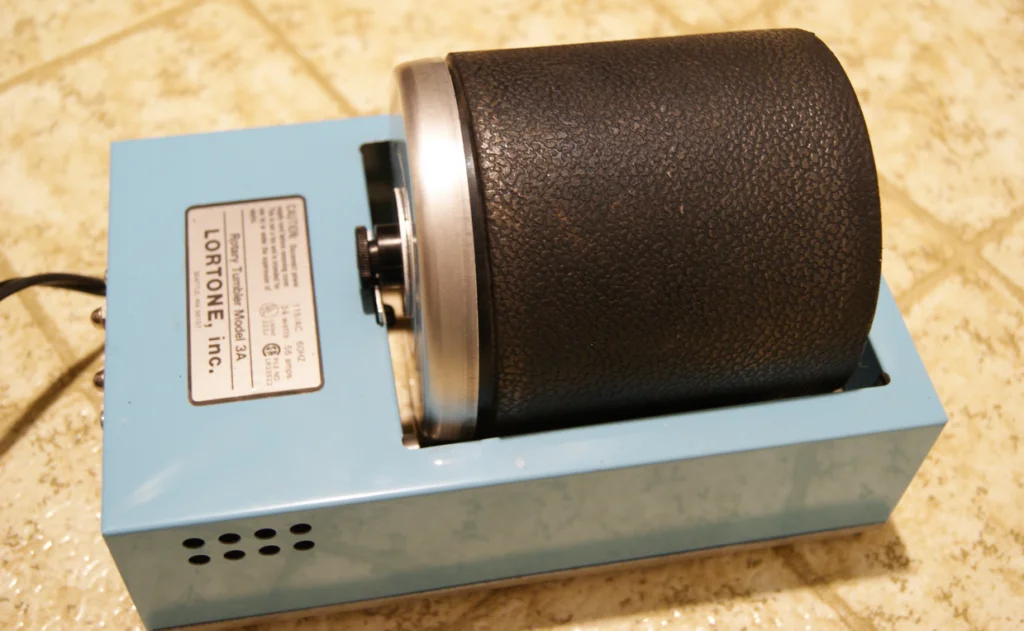
The rock tumbler promised to transform ordinary backyard pebbles into gleaming gemstones worthy of a jewelry store display case, though the reality usually involved weeks of grinding noise followed by rocks that looked suspiciously similar to how they started. The instruction manual showed dramatic before-and-after photos that suggested you’d soon be running your own rock shop from the garage. Loading up the tumbler with rough stones, grit, and water felt like initiating a geological process that normally took millions of years.
After what seemed like an eternity of mechanical rumbling that drove the entire household to distraction, the final reveal usually produced stones that were slightly smoother and occasionally shinier than their original state. The whole process taught patience in ways that no parent lecture ever could, as there was literally nothing to do but wait and hope for the best. Even when the results were disappointing, there was something satisfying about having participated in the ancient art of lapidary, even if your “gemstones” looked more like polished gravel than precious stones.
9. Crystal Growing Kits
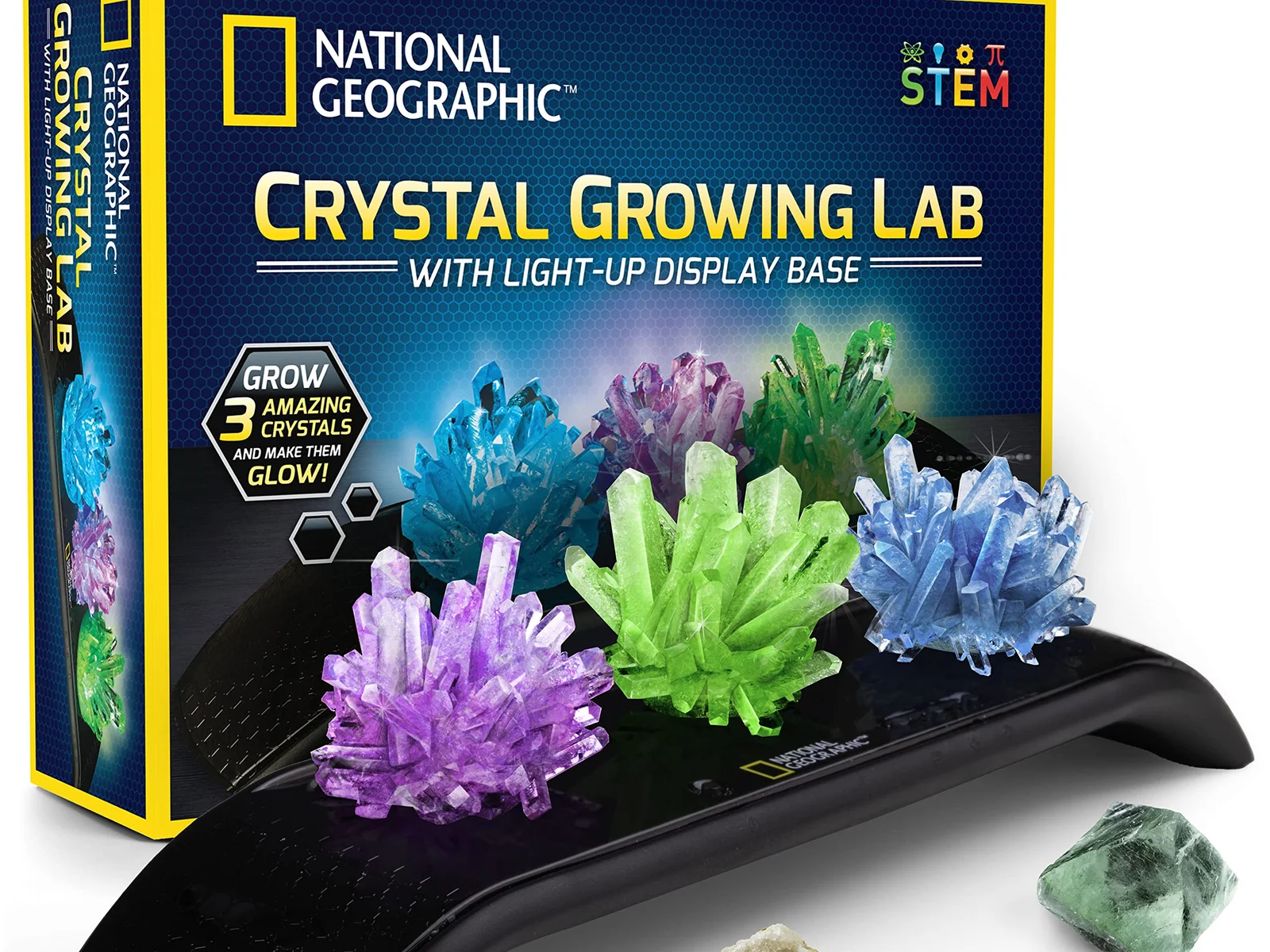
Those crystal growing kits promised to recreate the geological processes that formed the world’s most beautiful minerals, right there on your bedroom windowsill over the course of a few magical weeks. The packets of seed crystals and special solutions suggested you were about to become a combination chemist and geologist, growing your own treasure trove of sparkling specimens. The instruction guide was filled with scientific explanations about supersaturated solutions and crystalline structures that made the whole process feel legitimately educational.
Reality often involved watching cloudy water for days on end, hoping that something more impressive than salt deposits would eventually emerge from your careful preparation and patient waiting. When crystals actually did form, they were usually smaller and less spectacular than the photographs on the package, but they were undeniably real and definitely something you had created through your own scientific efforts. The successful experiments felt like minor miracles of chemistry, even if the crystals looked more like rock candy than the museum-quality specimens you’d been expecting.
10. Weather Station

The backyard weather station kit promised to turn your bedroom into mission control for atmospheric monitoring, complete with instruments that would make you the neighborhood’s official meteorologist and scientific authority. The barometer, thermometer, and wind vane components looked professional enough to belong at the local TV station, and the instruction manual was filled with charts and graphs for tracking weather patterns like a real scientist. Setting up the station felt like establishing your own personal branch of the National Weather Service.
Maintaining accurate records quickly proved more challenging than the initial enthusiasm suggested, especially when remembering to check readings three times daily competed with more immediately exciting activities like bike riding and comic books. The predictions based on barometric pressure and wind direction were usually about as accurate as closing your eyes and guessing, but there was something satisfying about having official-looking data to support your weather forecasts. Even when your predictions were completely wrong, you felt like a legitimate scientist with real instruments and documentation to prove it.
11. Ant Farm
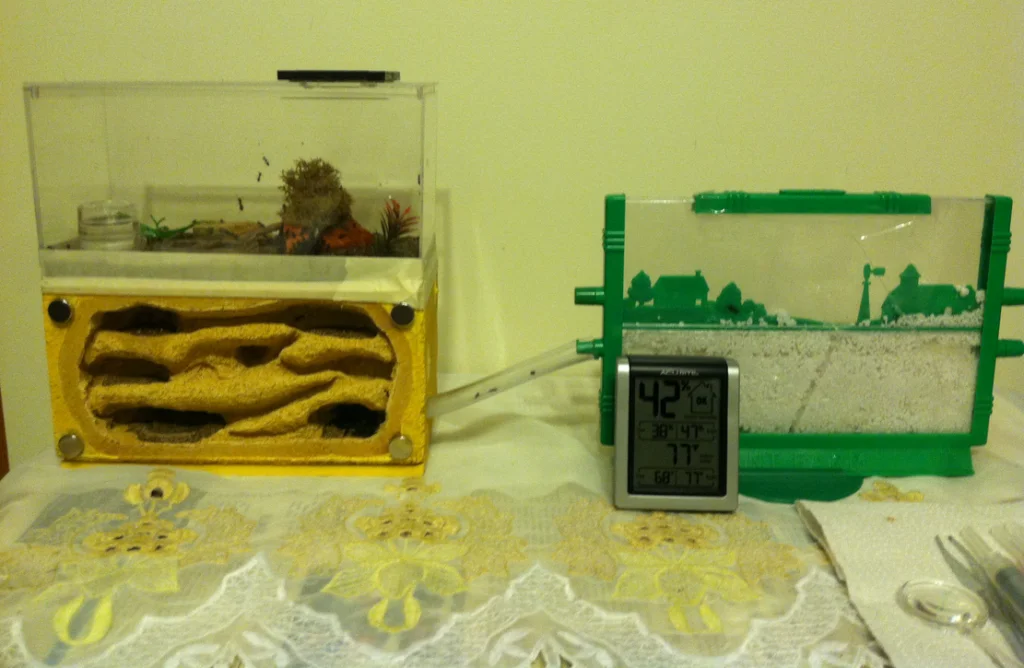
The ant farm promised to provide a window into the industrious world of underground engineering, where you could observe these tiny architects building tunnels and chambers like a miniature construction site. The marketing materials suggested you’d witness complex social behaviors and maybe even learn valuable lessons about teamwork and perseverance from your new six-legged employees. Loading the clear plastic habitat with sand and introducing the inhabitants felt like establishing your own ecological research station.
Most ant colonies either escaped within the first week or seemed to spend their time wandering around aimlessly rather than constructing the elaborate tunnel systems shown in the instruction booklet. When the ants did actually dig, it was usually a straight shot to the bottom rather than the intricate network of chambers and passages you’d been led to expect. Still, there was something fascinating about having a living, working society right there on your desk, even if their architectural achievements fell somewhat short of the underground cities depicted on the packaging.
12. Transistor Radios You Could Build
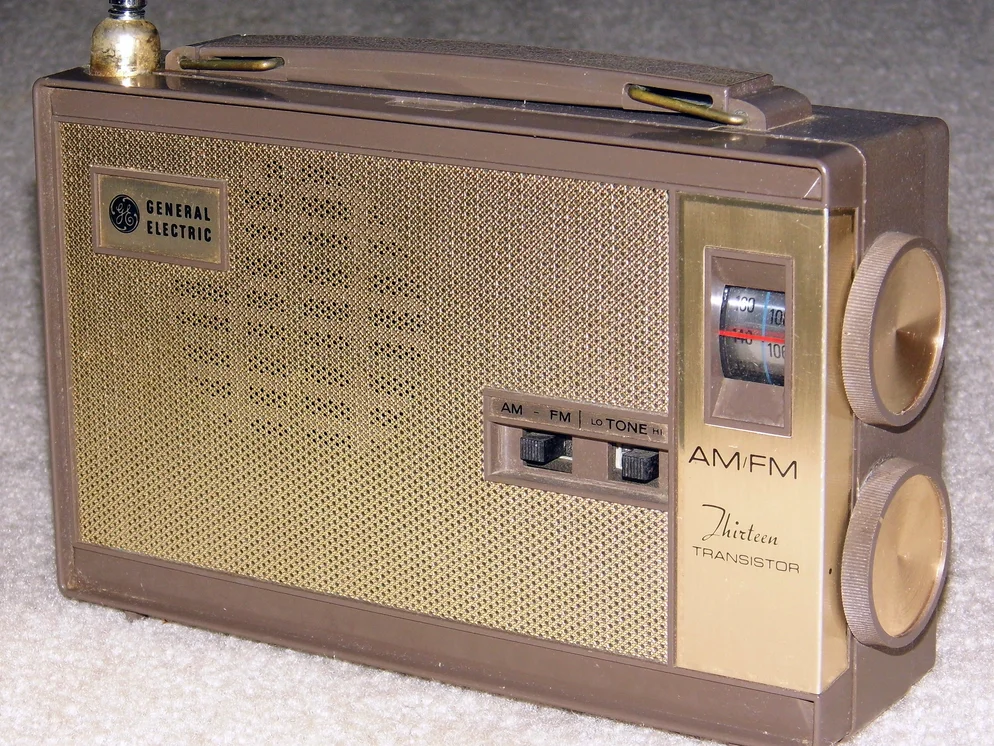
The build-your-own transistor radio kit represented the pinnacle of do-it-yourself electronics, promising to teach the fundamental principles of wireless communication while creating a functional device that could actually receive broadcasts from around the world. The components looked impossibly small and precise, like something that belonged in a real electronics factory rather than a kid’s bedroom workbench. Following the detailed schematic felt like decoding secret technical documents that only trained engineers were supposed to understand.
Successfully completing the assembly and hearing that first crackling signal come through the tiny speaker felt like joining the ranks of the world’s great inventors and electrical pioneers. The sound quality was usually poor and the range limited, but none of that mattered when you realized you’d built something that could actually capture invisible radio waves traveling through the air. Even when the finished product barely worked, you’d accomplished something that seemed almost magical – turning a pile of electronic components into a device that could bring the outside world directly into your room.
The magic of these toys wasn’t really in their functionality or their ability to deliver on their grand promises. It was in the way they made us believe, even temporarily, that we were capable of understanding and controlling the mysterious forces that shaped our world. They taught us that science wasn’t just something that happened in laboratories far away, but something we could participate in right there in our own bedrooms and backyards. And maybe, just maybe, that sense of wonder and possibility was worth more than any toy that actually worked perfectly.
This story 12 Toys That Made Us Feel Like Secret Inventors (Even If They Barely Worked) was first published on Takes Me Back.


